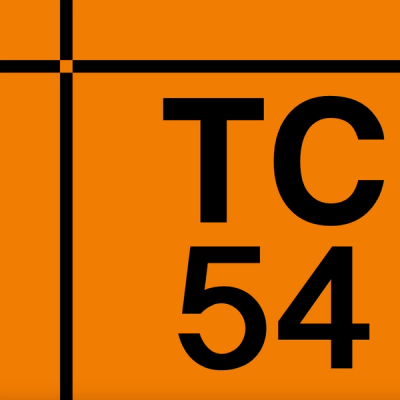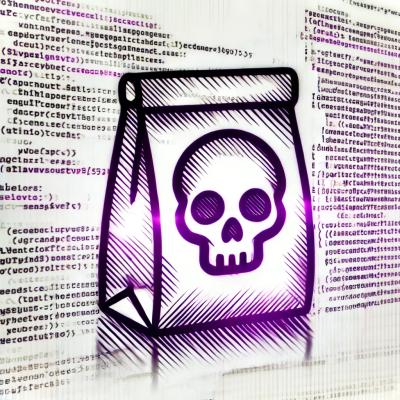
Django Pictures
Responsive cross-browser image library using modern codes like AVIF & WebP.
- responsive web images using the picture tag
- native grid system support
- serve files with or without a CDN
- placeholders for local development
- migration support
- async image processing for Celery, Dramatiq or Django RQ
- DRF support



Usage
Before you start, it can be a good idea to understand the fundamentals of
responsive images.
Once you get a feeling how complicated things can get with all device types, you'll probably find
a new appreciation for this package and are ready to adopt in you project :)
from django.db import models
from pictures.models import PictureField
class Profile(models.Model):
title = models.CharField(max_length=255)
picture = PictureField(upload_to="avatars")
{% load pictures %}
{% picture profile.picture img_alt="Spiderman" img_loading="lazy" picture_class="my-picture" m=6 l=4 %}
The keyword arguments m=6 l=4 define the columns the image should take up in
a grid at a given breakpoint. So in this example, the image will take up
6 columns on medium screens and 4 columns on large screens. You can define your
grid and breakpoints as you want, refer to the grid columns and
breakpoints sections.
The template above will render into:
<picture class="my-picture">
<source type="image/webp"
srcset="/media/testapp/profile/image/800w.webp 800w, /media/testapp/profile/image/100w.webp 100w, /media/testapp/profile/image/200w.webp 200w, /media/testapp/profile/image/300w.webp 300w, /media/testapp/profile/image/400w.webp 400w, /media/testapp/profile/image/500w.webp 500w, /media/testapp/profile/image/600w.webp 600w, /media/testapp/profile/image/700w.webp 700w"
sizes="(min-width: 0px) and (max-width: 991px) 100vw, (min-width: 992px) and (max-width: 1199px) 33vw, 600px">
<img src="/media/testapp/profile/image.jpg" alt="Spiderman" width="800" height="800" loading="lazy">
</picture>
Note that arbitrary attributes can be passed
to either the <picture> or <img> element
by prefixing parameters to the {% picture %} tag
with picture_ or img_ respectively.
Setup
Installation
python3 -m pip install django-pictures
Settings
INSTALLED_APPS = [
'pictures',
]
PICTURES = {
"BREAKPOINTS": {
"xs": 576,
"s": 768,
"m": 992,
"l": 1200,
"xl": 1400,
},
"GRID_COLUMNS": 12,
"CONTAINER_WIDTH": 1200,
"FILE_TYPES": ["WEBP"],
"PIXEL_DENSITIES": [1, 2],
"USE_PLACEHOLDERS": True,
"QUEUE_NAME": "pictures",
"PROCESSOR": "pictures.tasks.process_picture",
}
If you have either Dramatiq or Celery installed, we will default to async
image processing. You will need workers to listen to the pictures queue.
Placeholders
This library comes with dynamically created placeholders to simplify local
development. To enable them, add the following to enable the
PICTURES["USE_PLACEHOLDERS"] setting and add the following URL configuration:
from django.urls import include, path
from pictures.conf import get_settings
urlpatterns = [
]
if get_settings().USE_PLACEHOLDERS:
urlpatterns += [
path("_pictures/", include("pictures.urls")),
]
Legacy use-cases (email)
Although the picture-tag is adequate for most use-cases,
some remain, where a single img tag is necessary. Notably in email, where
most clients do support WebP but not srcset.
The template tag img_url returns a single size image URL.
In addition to the ratio you will need to define the file_type
as well as the width (absolute width in pixels).
{% load pictures %}
<img src="{% img_url profile.picture ratio="3/2" file_type="webp" width=800 %}" alt="profile picture">
Config
Aspect ratios
You can specify the aspect ratios of your images. Images will be cropped to the
specified aspect ratio. Aspect ratios are specified as a string with a slash
between the width and height. For example, 16/9 will crop the image to 16:9.
from django.db import models
from pictures.models import PictureField
class Profile(models.Model):
title = models.CharField(max_length=255)
picture = PictureField(
upload_to="avatars",
aspect_ratios=[None, "1/1", "3/2", "16/9"],
)
# template.html
{% load pictures %}
{% picture profile.picture img_alt="Spiderman" ratio="16/9" m=6 l=4 %}
If you don't specify an aspect ratio or None in your template, the image will be
served with the original aspect ratio of the file.
You may only use aspect ratios in templates, that have been defined on the model.
The model aspect_ratios will default to [None], if other value is provided.
Breakpoints
You may define your own breakpoints, they should be identical to the ones used
in your css library. Simply override the PICTURES["BREAKPOINTS"] setting.
Grid columns
Grids are so common in web design, that they even made it into CSS.
We default to 12 columns, but you can override this setting, via the
PICTURES["GRID_COLUMNS"] setting.
Container width
Containers are commonly used to limit the maximum width of layouts,
to promote better readability on larger screens. We default to 1200px,
but you can override this setting, via the PICTURES["CONTAINER_WIDTH"] setting.
You may also set it to None, should you not use a container.
File types
Unless you still services IE11 clients, you should be fine serving just
WebP. Sadly, AVIF
(WebP's successor) is
not yet supported by Pillow.
If you are serving IE11 use add JPEG to the list. Beware though, that this may
drastically increase you storage needs.
Pixel densities
Unless you really care that your images hold of if you hold your UHD phone very
close to your eyeballs, you should be fine, serving at the default 1x and 2x
densities.
Async image processing
If you have either Dramatiq or Celery installed, we will default to async
image processing. You will need workers to listen to the pictures queue.
You can override the queue name, via the PICTURES["QUEUE_NAME"] setting.
You can also override the processor, via the PICTURES["PROCESSOR"] setting.
The default processor is pictures.tasks.process_picture. It takes a single
argument, the PictureFileFile instance. You can use this to override the
processor, should you need to do some custom processing.
Migrations
Django doesn't support file field migrations, but we do.
You can simply auto create the migration and replace Django's
AlterField operation with AlterPictureField. That's it.
You can follow the example in our test app, to see how it works.
Contrib
Django Rest Framework (DRF)
We do ship with a read-only PictureField that can be used to include all
available picture sizes in a DRF serializer.
from rest_framework import serializers
from pictures.contrib.rest_framework import PictureField
class PictureSerializer(serializers.Serializer):
picture = PictureField()
The response can be restricted to a fewer aspect ratios and file types, by
providing the aspect_ratios and file_types arguments to the DRF field.
from rest_framework import serializers
from pictures.contrib.rest_framework import PictureField
class PictureSerializer(serializers.Serializer):
picture = PictureField(aspect_ratios=["16/9"], file_types=["WEBP"])
You also may provide optional GET parameters to the serializer,
to specify the aspect ratio and breakpoints you want to include in the response.
The parameters are prefixed with the fieldname_
to avoid conflicts with other fields.
curl http://localhost:8000/api/path/?picture_ratio=16%2F9&picture_m=6&picture_l=4
{
"other_fields": "…",
"picture": {
"url": "/path/to/image.jpg",
"width": 800,
"height": 800,
"ratios": {
"1/1": {
"sources": {
"image/webp": {
"100": "/path/to/image/1/100w.webp",
"200": "…"
}
},
"media": "(min-width: 0px) and (max-width: 991px) 100vw, (min-width: 992px) and (max-width: 1199px) 33vw, 25vw"
}
}
}
}
Note that the media keys are only included, if you have specified breakpoints.
Django Cleanup
PictureField is compatible with Django Cleanup,
which automatically deletes its file and corresponding SimplePicture files.
external image processing (via CDNs)
This package is designed to accommodate growth, allowing you to start small and scale up as needed.
Should you use a CDN, or some other external image processing service, you can
set this up in two simple steps:
- Override
PICTURES["PROCESSOR"] to disable the default processing. - Override
PICTURES["PICTURE_CLASS"] implement any custom behavior.
PICTURES = {
"PROCESSOR": "pictures.tasks.noop",
"PICTURE_CLASS": "path.to.MyPicture",
}
The MyPictureclass should implement the url property, which returns the URL
of the image. You may use the Picture class as a base class.
Available attributes are:
parent_name - name of the source file uploaded to the PictureFieldaspect_ratio - aspect ratio of the output imagewidth - width of the output imagefile_type - file type of the output image
from pathlib import Path
from pictures.models import Picture
class MyPicture(Picture):
@property
def url(self):
return (
f"https://cdn.example.com/{Path(self.parent_name).stem}"
f"_{self.aspect_ratio}_{self.width}w.{self.file_type.lower()}"
)





